CITY
OF INDIANOLA
PARKS, RECREATION, AND OPEN SPACE MASTER PLAN



OF INDIANOLA
PARKS, RECREATION, AND OPEN SPACE MASTER PLAN


Doug Bylund - Parks and Recreation Director
Akhilesh Pal - Public Works Director
Charlie Dissell - Community and Economic Development Director
Emily Rizvic - Associate Planner
Heather Hulen – Executive Director
Amanda Zwanziger – Indianola Chamber of Commerce
Kate Walton – Parks and Recreation Commission
Al Farris – Planning and Zoning Commission
Karey Bishop – Iowa Realty
Bernie Brueck – Indianola Schools
Jon Young – Indianola Little League
Jeff Schortmann – Indianola Soccer Tribe
Doug Gaumer – Indianola Park Friends
Jim Coffey – Iowa DNR

Stephanie Erickson, Mayor
Mellisa Sones, First Ward
Ron Dalby, 2nd Ward
Steve Armstrong, 3rd Ward
Christina Beach, 4th Ward
Josh Rabe, At-Large
Steve Richardson, At-Large
PLANNING AND ZONING COMMISSION
Rich Piper
Carrie Woerdeman
Lin Stecker
Cortney Marmon
Jake Vice
Sarah Ritchie
Justin Noethe
Misty Darling
Al Farris
PARKS AND RECREATION COMMISSION
Marcy Hahn
Judy Pauley
Kerry Koonce
Kate Walton
Kathy Turnball
Randy Bickham
MSA Professional Services, Inc.
Chris Jansen, AICP
Ankeny, IA 50021
Shawn O’Shea, AICP
Shannon Gapp, AICP
Emily Huston

Parks, recreation and trails are important elements in the quality of life for all communities. Not only do these elements provide a safe and healthy place to spend time, they also serve to beautify, protect the natural environment and influence the patterns of development in and around the community.
The City of Indianola realizes the importance and benefits its parks, open space and trail systems have on the City’s character and quality of life and is committed to providing for the recreational needs of current and future residents. This plan intends to guide the continual improvement of the City’s park, recreation and trail systems and maintain its eligibility for State and Federal park and recreation grants. This plan envisions a connected system of parks, open spaces and trails throughout Indianola, related to the City’s natural resources, geography and neighborhoods.
The plan is intended to be a supporting document to Indianola’s Comprehensive Plan, as well as align Indianola with local and State initiatives to promote outdoor recreation. This Plan, along with the City’s Long-Range Plans and Zoning Code, will be used to implement and promote its parks and recreation program.
Specifically the plan provides:
• Information regarding demographic trends
• An inventory of existing park and recreational facilities,
• An analysis of parkland and recreational needs and demands,
• General policy direction regarding park, recreation, open space, bicycle, and pedestrian facility planning and maintenance,
• Recommendations for new and improving existing park, bicycle and pedestrian facilities, and
• Implementation strategies.
This plan identifies conceptual locations and recommendations for different types of parks, trails, natural areas, and recreational facilities. In nearly every case, more detailed planning, engineering, study, budgeting, and discussions will be necessary before decisions are made to actually acquire land or construct recreational facilities.

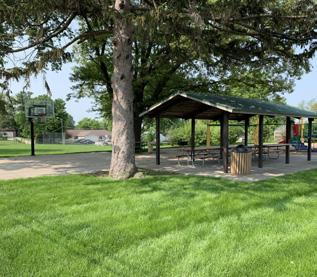

Recreation, bicycle, and pedestrian planning are essential components of long-range community planning in Indianola. Early in the planning process Indianola facilitated an online community survey to gather citizen feedback on desired public park, trail, and recreational facilities. The process also included a public involvement meeting. This meeting was held to obtain input from the public on desired park and recreation improvements. The plan content and format have been tailored to fit the needs of Indianola.
When people talk about the places they love in a community, parks are typically at the top of the list. Parks, trails, and recreational programs are essential to the physical, economic, environmental, and social health of cities and their residents in maintaining and enhancing its parks, trails, and recreational opportunities as the community grows; it also provides insight into the existing conditions and specific recommendations for each of the City’s parks and recreational spaces.
The information in this Plan represents the results of interactive and engaging outreach with Indianola community members, stakeholders, and City staff. Prior to inventory and data collection, the Project Team met with City staff to establish objectives and expectations for the project; community members were then given the opportunity to share their thoughts on the existing conditions and future aspirations of Indianola’s parks and trails.
One overarching goal of the Master Plan and drafting process was to communicate the importance of parks and recreation to people’s quality of life. When our parks, open space, and trails are accessible and well-maintained, we are more likely to engage with our community and reap the numerous benefits that access to nature provides. When our parks thrive, we thrive.
According to the National Recreation and Parks Association (NRPA), when individuals use green spaces, they have fewer health issues, improved blood pressure and cholesterol levels, and reduced stress—which leads to a lower incidence of depression. According to a report by the NRPA titled “The Economic Impact of Parks,” “Diabetic individuals taking 30-minute walks in a green space experienced lower blood glucose levels than spending the same amount of time doing physical activity in other settings. Thirty minutes of walking in nature resulted in larger drops in blood glucose than three hours of cycling indoors.”
While parks, forests and trails provide opportunities to improve the health of residents, they also contribute to the greater ecological health of the City. Parks are often tied together with environmentally sensitive areas such as wetlands, floodplains, surface waters, or significant woodlands which can include trails. These areas provide food and shelter for local wildlife and natural stormwater retention. Individual parks can provide important “rooms” of natural resource activity; however, they become even more functional when they can be linked together by environmental corridors, or “hallways.” Individual parks can provide important habitat and shelter to support and promote opportunities for natural resource activity -- they become more functional when they are connected by environmental corridors.
The ability to retain or attract new residents has direct economic benefits to the City. For this reason, having a great park, recreation, and trail systems contributes directly to economic development.
According to a study completed by the National Recreation and Parks Association and George Mason University, 72% of the 70 communities studied use parks and recreation images in their economic development materials. The study notes that parks and recreation contribute to economic development through business attraction, business retention and expansion and talent attraction. In addition, if a park system is designed with connections to regional destinations, it can serve to bring in additional visitors. This additional tourism has a significant benefit to local businesses. The City’s plan will align with regional and State plans to promote outdoor recreation in the greater area.



Connecting parks and recreation facilities to each other and the general population via trails is important to encourage safe, alternative modes of transportation. These paths can provide an important alternative means of traveling for those who prefer to bike for health or environmental reasons and for those who lack other means of transportation due to age, income, or disability. Shared-use paths also provide important connections to public transit. According to the National Household Travel Survey conducted by the Federal Highway Administration, 85% of transit trips begin and end with walking and nearly one in six walking trips is made for the purpose of accessing public transit.
Parks around the nation are seeing an increased usage of trails and parks that are forcing the redesign of common areas and improving pedestrian and bicycle flow. It is likely these shifts will impact parks into the future. Along with the design of park and recreation spaces, it is essential to anticipate the way in which parks park funding is going to shift—there will likely be a more diverse set of funding sources and partnerships for park and recreation projects.



Understanding the history, culture and traditions of a community plays a key role in planning for the future, as these are the underlying principles that help shape a community. This chapter presents a synopsis of the community based on its geography, demographic information and history. This information provides an understanding of the community that fosters the exploration of recreation trends in the City of Indianola which will in turn assist in the formulation of recommendations for park and recreation programs, amenities and services.

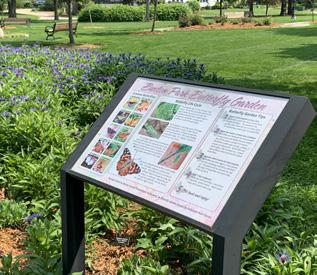

This section describes some of the historic demographic trends for Indianola as they pertain to population, age composition, housing, and school enrollment. This includes data from the U.S. Census Bureau’s American Community Survey (ACS), which is reported as a rolling average over a five-year period. Because ACS data points are only estimates and contain a margin of error, they may not always represent conditions as accurately as Census data. However, data is generally more reliable at the State and County levels.
According to the U.S. Census, Indianola’s total population was 15,833 in 2020. Elevate Indianola Comprehensive Plan shows that Indianola is expected to add an additional 5,000 residents between 2020 and 2040, representing a 25% increase over a 20 year period, or 1.3% annual growth. Improvements to parklands and facilities will be necessary to continue meeting the needs of Indianola’s population.
Based on the 2021 ACS 5-Year Estimates, there are approximately 5,878 households in Indianola. This number has increased by 448 from 2010; with the number of households with children under 18 staying consistent at 34%. The average household size has decreased from 3.03 in 2010 to 2.95 in 2021. If Indianola follows nationwide trends, this number could continue to decrease as a result of smaller family sizes, increases in life expectancy, and an increase in single-family households.
The population of Indianola is predominantly white (92.7%), with 1% being Black or African American, .7% being Asian, and .9% being Pacific Islander, Indian, or another single race. 4.5% of the population is of two races, with .2% of the population being of three or more races.

Over 50% of Indianola’s population is made up of individuals under the age of 40 years old, with the median age being 35.4. With a diverse age-range, Indianola has the opportunity to provide a variety of outdoor recreational activities and facilities for all ages.
Indianola is located south of the Middle River and north of the South River. The Steels Branch of the South River runs up into the boundary of the City. The closest lake to Indianola is Lake Ahquabi, located south of the City. It provides boat rentals and launches, campgrounds, fishing, a sand beach, and trails.
Indianola consists of very deep, somewhat excessively drained soils formed in sandy glacial drift. Indianola soils are on hills, terraces, terrace escarpments, eskers, and kames of drift or outwash plains at elevations of near sea level to 1,000 feet.
Wildlife
Warren County is home to multiple Conservation Areas for wildlife observation. Bank Swallow Bend and Summerset Trail and Park are great locations for birding, with the former boasting sightings of over 170 species of birds. Annett Nature Center and Park is home to acres of prairie, wetland, and open area for a variety of year-round outdoor recreational activities and wildlife viewing. Blue Flag Marsh and Otter Creek Park are also popular destinations.
Schools can also fulfill local park needs in communities, as they provide many of the same facilities found in neighborhood parks like playground equipment and athletic fields.
Indianola has a number of schools within the City borders. All elementary schools in the City have their own playground facilities. Indianola Middle School and High School has six natural turf baseball diamonds, an open field area with multiuse recreational fields and practice areas.
The High School is located across the street from the Middle School and houses its own baseball and softball field, and open/practice area field.
Blake Fieldhouse
The Indianola Community Youth Foundation and Indianola native and former Major League Baseball player, Casey Blake funded the Blake Fieldhouse, a sports complex attached to the middle school that hosts Mat Tribe, Soccer Tribe, Indianola Basketball Association, Indianola Volleyball Club, and a variety of non-athletic events and groups.
The College has its own facilities for athletics. The campus houses a practice soccer field, tennis complex, softball and baseball diamonds, intramural practice field, and football and soccer stadium that can accomodate up to 5,000 people.
State and regional parks offer a wide range of opportunities for recreation, gathering, and enjoying nature. While Indianola residents benefit from the following parks and preserves, the City plays no role in their development, operation, or maintenance.
Lake Ahquabi State Park
A popular state park in south-central Iowa. This park has more than six miles of hiking trails, a swimming beach, boat ramps and aquatic recreation rentals, a campground, and reservable shelters. The park is also a popular fishing destination.
Banner Lakes at Summerset State Park
Located between Des Moines and Indianola, this park provides a two-mile, paved scenic bike loop that connects to Summerset Trail, two lakes for fishing, and a shooting range adjacent to the park.
Walnut Woods State Park
The park is home to the largest stand of black walnut trees in Iowa, as well as being a popular spot for purple martin bird watching. Hiking, camping, and fishing are all popular activities
Badger Creek State Recreation Area
A popular state park in south-central Iowa. This park has more than six miles of hiking trails, a swimming beach, boat ramps and aquatic recreation rentals, a campground, and reservable shelters. The park is also a popular fishing destination.
Indianola Country Club
Indianola Country Club is a private 18 hole golf club established in 1920. The course expanded from 9 to 18 holes when the new west nine was opened for play in the spring of 2004.
The 18-hole course at the Deer Run Golf Club was established in 2000 and features 6,628 yards of golf from the longest tees for a par of 72. In 2022, Deer Run Golf Club was purchased from its original owners and now operates under new management.
The aquatic center provides the community with a 12,900 foot, zero-depth pool, diving board, water slides, concessions, lounge chairs, and shaded structures. An aquatic wheelchair is also available for in-water use. Both the large and shallow pool areas are able to be rented out for private events events.
The Activity Center is the home of the City’s Parks and Recreation office, while also functioning as the senior center. The facility provides planned events and activities available to anyone 50 and over.
Indianola’s Wellness Campus provides the community with a wide range of amenities and recreational programming. Lap and recreational pools, a gymnasium, racquet ball court, children’s learn and play center, indoor cycling studio, strength training area, cardio workout space, community room, aerobics studio, yoga, pilates, and barre studio, and an indoor running track can all be found here.
Parks are often the most important and highly prized components of any community. They are sources of civic pride and are essential to the physical, economic, environmental, and social health of communities and their residents. Good planning is essential to a community’s recreation system as it provides a means to meet the needs and wants of the community. As a plan is developed it is important to keep in mind the variety of benefits that parks
When residents and visitors have access to parks, trails, and recreation facilities, they exercise more and are generally healthier and happier. Additionally, increased exposure to natural areas that parks and open space provide has been linked to improved physical and mental health. Parks and trails encourage healthy, happy, active lifestyles and improve overall quality of life throughout a community.
Parks have important social benefits. In a time when social media defines the interactions of many people, parks and recreational centers are places to meet, catch up with family members and friends, and feel like part of the larger community. As a focal point of neighborhoods, parks help develop connections between residents by providing a venue for community building gatherings, like school trips, festivals, and celebrations. Significant natural features, like Lake Ahquabi and social gathering areas, have facilities and events for the enjoyment of all community members.
Parks and open space provide environmental benefits. Natural and planned vegetative landscapes found in parks, preserves and open spaces improve air quality and water quality. These areas may also play a role in stormwater management and protecting the quality and vitality of natural areas.
Numerous studies have shown that close proximity and access to parks, trails, and open space has a positive impact on residential property values. Commercial property values can also be increased with proximity to recreational amenities, creating potential for these sites to act as catalysts for future growth and development. Access to recreational amenities helps fuel growth and investment in local economies.
Parks contribute to aesthetics of a community. Parkways, tree-lined streets, gardens, views of water bodies, public art, trails, and landscaped areas around town are all things that contribute to creating beautiful places to live, work, and play. Visitors often remember a place by its access to beautiful natural areas, contributing to a positive community image. Improved linkages should also connect community parks to other community nodes. Attractive, safe and well marked linkages make essential contributions to a community’s livability and viability.
The definitions used in this plan are modified definitions used by the National Recreation and Park Association (NRPA). They are used to classify the existing recreation system and to guide plans for the future. They begin with the smallest and most intensely used and the proceed to largest and least used. Neighborhood and community parks are normally provided by municipalities. Larger recreation areas are normally provided by larger units of government or private enterprise.
Typically on a small lot (1/4 acre), located within a residential neighborhood. Usually have one facility and benches.
- Desirable size - 2 acres or less
- Acres/1,000 population: .25 to .5
- Service Area: 1/8 to 1/4 mile radius
Created to take advantage of a natural or unusual feature, or to preserve areas and provide recreation. Golf course, marinas and boat ramps could be considered this.
- Desirable size - varies on function
- Acres/1,000 population: varies on function
- Service Area: varies on function
This provides open space for all ages and enhances the overall environment. A natural location is ideal for this type, and it usually has tables, benches, paths, lights, and is walkable.
- Desirable size - 3-7 acres
- Acres/1,000 population: 5.0 -8.0 acres
- Service Area: 1 to 2 mile radius
Intended to serve many neighborhoods. Tends to have woods, water features, trails, and picnic areas. Should be determined by the size of the population.
- Desirable size - 3-7 acres
- Acres/1,000 population: 5.0 -8.0 acres
- Service Area: 1 to 2 mile radius
Pickard DeNelsky
Memorial
Barker
Dayton
Easton
Moats
Buxton
McCord
One of the most popular neighborhood parks, the land for Barker Park was purchased by the Park Board in 1952 from C.F. and Francis Flesher, C. Ray and Eva Flesher, Frank C. and Blanche Flesher. The park was renovated in 2001. The park was named after the Barkers, a pioneer family that assisted in laying out the town of Indianola in 1849.
The shelter offers 3 picnic tables with seating for 18, with 4 electrical outlets.
Classification:
Neighborhood Park
Features
Ball fields
Basketball Court
Benches
Drinking Fountain
Grill
Picnic Tables
Playground
Restrooms - Portable


Shelter

The first park in Indianola’s system was donated to the City in 1906 by Mr. and Mrs. William Buxton. Both stunning and serene, Buxton Park is nestled in the center of Indianola adjacent to Simpson College. Its formal gardens, butterfly garden, ornamental fountain, wind sculptures, public art and gazebo offer a spectacular setting for intimate gatherings, photo sessions or a simple stroll in the park.
A children’s garden added in 2019 invites little ones to spend time getting closer to nature with a play tunnel, interactive Natureland game, musical instruments, planter boxes filled with touch and feel plants and vegetables, and other nature-related activities.
Also home to an arboretum, the park offers a self-guided interpretive tree tour pamphlet at the display case near the gazebo. A three-tiered water fountain is ADA accessible and also offers a drink for dogs on leash.
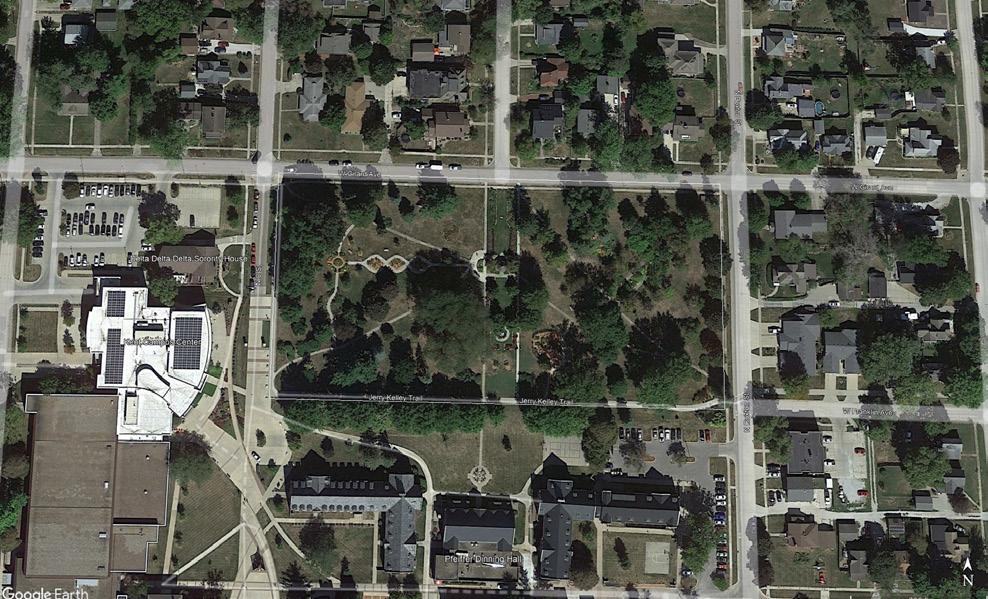
Classification:
Community Park
Features ADA Accessible
Benches
Bike Trail
Children’s Garden
Drinking Fountain
Flower gardens
Fountain
Gazebo
Sculptures

Donated by Osborne Williams in 1959, Dayton is a small pocket park with a future of expansion that adjoins the Summerset Trail, and is used by area residents to play ball games or picnic.
800 E Franklin Ave Indianola, IA 50125
Classification:
Neighborhood Park
Features Ball field
Basketball Court
Grill
Picnic Areas
Playground
Restrooms - Portable


Summerset Trail to Carlisle (11 miles)

Opened in 2008, this park area includes 22.9 acres donated by the DeNelsky family as a memorial to Minnie DeNelsky.
The area has approximately 9 - 10 acres of woodlands with the remaining in native grasses, flowers and open space. This unique natural area within the city limits provides environmental and wildlife appreciation and education opportunities, in addition to serving as a neighborhood park.
A minimum of 70% of the land will be maintained and managed as existing wooded and natural open space area.
509 E. 4th Ave. Indianola, IA 50125
Classification:
Special Purpose Park
Features Grill
Parking
Picnic Areas
Restrooms - Portable
Trails - mowed grass paths
3rd Ave
4th Ave
2nd Ave



South River once flowed through Downey Memorial Park. Purchased by the City in 1933 as part of the waterworks area, the site was named Richard Downey Memorial Park in honor of caretaker Walter Downey’s son, who died in World War II.
Classification:
Community Park
Features
Benches
Drinking Fountain
Off Leash Dog Park
Picnic Tables
Restrooms - Portable
Shelter
Agility Equipment Bag Dispensers
Fenced land
Waste Receptacles


The park is a a subfacility of Downey Park and provides space where dogs can exercise and socialize with other dogs. It offers a great opportunity for dogs to run, play and interact with other dogs.
Water

Received by the City in 1974, after development of the surrounding homes, Easton is a neighborhood park with play equipment, landscape plantings, and a stream running through the center.
Park Location:
Classification: Neighborhood Park 1211 E Euclid Ave Indianola, IA 50125
Features Picnic Areas
Playground



Donated to the Parks and Recreation Commission by Max McCord in 1976, the park has areas with play equipment and several hiking trails around the natural wooded perimeter of the site.
The shelter has 9 picnic tables with seating for 72, and 5 electrical outlets.
Classification:
Community Park
Features
Basketball Court
Drinking Fountain
Grill
Picnic Tables
Playground
Restrooms - Modern
Sand volleyball courts


Shelter
Trails
Disc Golf Course (under construction)


The land for this park was purchased in 1956 from Victor and Lois Gillespie for the purpose of building a pool. Today, the park contains play equipment, open areas, a large Aquatic Center, an outdoor Amphitheater, and Skate Park.
The shelter offers 12 picnic tables with seating for 96, with 6 electrical outlets.
Classification:
Special Purpose Park
Features
Amphitheater
Benches
Drinking Fountain
Grill
Jerry Kelley Trail to Memorial Park (1.2 miles)
Picnic Tables
Playground


Pop Machine
Restrooms - Modern
Shelter
Skate Park
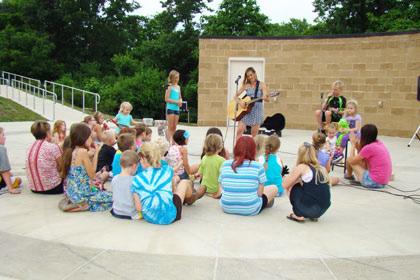
Visitors to Indianola are greeted by this cheerful wayside park on Highway 65/69. Its amenities make the park a popular destination for school outings, reunions and parties.
The City purchased the north end of the site in 1911 with acquisition of the south portion in 1939. The park shelter was constructed in 1954, and summer band concerts were held there for years.
The shelter offers 12 picnic tables with seating for 96, and 3 electrical outlets.
Classification:
Community Park
Features
Baseball / Softball Diamond
Basketball Court
Benches
Drinking Fountain
Grill
Picnic Tables
Playground
Restrooms - Modern
Shelter
Water
N 1st St Indianola, IA 50125



The largest park in the system, Pickard Park offers a venue for many outdoor recreational activities. The shelter boasts a scenic view of the Iowa countryside. Formerly a farm, the park lies on the eastern edge of Indianola and is the eastern terminus of the McVay / Summerset Trail.
The park hosts cross country meets, youth and adult softball tournaments and disc golf tournaments including an annual National Tour featuring top professional and amateur disc golfers.
Acquired from the Clarence Pickard family in 1976, the rolling hillsides include some of the first terraces and water diversion projects done by the Soil Conservation Service in Warren County.
Park Location:
Classification:
Special Purpose Park 2205 E 2nd Ave Indianola, IA 50125
Features
ADA Accessible Playground
Ball fields
Bike Trail
18-Hole Disc Golf Couse
Drinking Fountain
Grill
Horseshoe court
Picnic Shelters
Picnic Tables
Playground
Restrooms - Modern
Nature Trails



This little gem is located on the southeast corner of City Hall at Salem and Jefferson. Multiple flowerbeds showcase an ever-changing display of annual and perennial flowers.
The pink-flowered rose, ‘Carefree Beauty’, is featured here as well as in plantings around Indianola. Ornamental ‘Prairiefire’ crabapple trees are planted around the perimeter of the park. Antique-style lighting and a four-sided clock tower add a nostalgic touch to this park. The focal point of the park is a sculpture called the Tree of Life.


Classification: Pocket Park
Features Benches Flower gardens

Purchased from the estate of Horace E. Patten in 1964-65, this neighborhood park has been leveled and reseeded from its original land of a deep water way. Neighborhood children enjoy its play area and basketball court.
Location:
Classification:
Neighborhood Park
Features Basketball
Picnic Areas
Playground
Restrooms - Portable




Public parks are a unique amenity because they have the potential to be accessible to anyone in the community, regardless of age, gender, ability, socioeconomic status, race or ethnicity. Though we often find that disparities exist in the distribution and quality of parks and recreation amenities, many Parks and Recreation Departments across the U.S. are now rethinking how to engage and provide benefits to residents who do not currently have access to parks. If parks can be more inclusive, they have the potential to function as a nucleus of neighborhood activity, where residents can gather for social events, recreational activities, and meetings about local issues, increasing social interaction and creating an overall sense of community.
Develop a comprehensive, usable, living document which outlines the current assets and improvements of the park system. The objective of this plan is to develop a comprehensive, usable, living document was created with the objective of analyzing the existing conditions of the parks to better develop an equitable and usable concept for the new park area for visitors and current and future residents. The recommendations of this plan are divided into two major sections:
Our vision is to promote the health and well-being of the community by providing fun, welcoming, and clean parks and recreation spaces for everyone. We seek to offer safe, well-designed, and maintained facilities, integrate community-wide programs and activities accessible to all ages and abilities, and preserve and protect natural areas, while developing partnerships to provide state-of-the art new and existing amenities consistent with the Comprehensive Plan and future growth of the community.
Visioning Statement Themes:
• Providing a variety of amenities
• Future growth
• Open Space
• Conservation of natural areas
• Accessibility – both physically and financially
• Over-arching/long-term goals to reach
• Attract families and visitors to the area
• Integrated with community-wide programs and activities
• Partnership with the community
• Desire to purchase parks and not just rely on donations.
• Access to parks within ½ mile or 16 acres/1,000 residents
• Consistent with the Comprehensive Plan
• Parks are connected throughout the community
• More Parking
• Attracting Visitors
• More Chamber hosted events
• Live entertainment
• Staff for programming (need more)
• Integration with Wellness Campus
• Plan for future City Hall and Green Space
• Master Planning for individual parks
• Alleyways in downtown areas. Pocket Parks and creating connections.
• Private/Public Partnerships – sponsorship tiers for funding parks (does currently exist, but could be improved)
• Park near Wellness Campus – wellness focused equipment and activities
• Bike stations along trails
Build Upon and Improve:
• The number of parks in the community
• Quality green space
• Strong parks located in the older parts of Indianola
• Centrally located parks
• Buxton – always beautiful
• Providing programs for all age groups
• Drive in Movie at Pickard Park – had food trucks
• Emergency button at Skate Park
• ArcGIS system for parks and amenities – create an interactive system so people could search for parks that have their desired amenities/equipment
• QR codes as a kiosk – activities, history, plants, etc.
• More rental equipment for events
• Party trailer
• More outdoor sport spaces that are not just complexes
• Create complexes that fit the size of Indianola
• South Park - has a busier road that kids must cross
• Moats Park – crossing Iowa Ave to get to park
• More lighting at parks and along trails
• Funding. How do we make sure that priorities are being implemented?
• More open/flat land for flag football, soccer, etc.



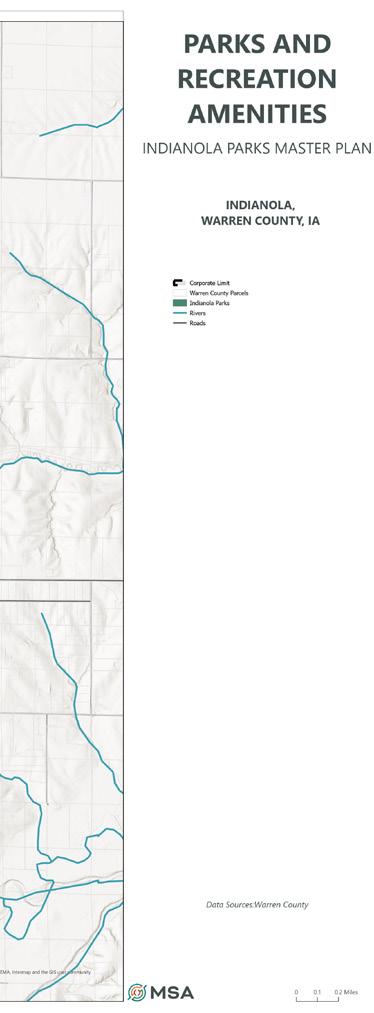












Multiple public engagement efforts were used to determine the following desired future amenities. The public had opportunitites to respond both in person and online through the community survey and share what they would like to see be brought into Indianola Parks and Recreation. Ideally, all residents should have a park within 1/2 mile of their home. North of Iowa Avenue has seen a lot of growth and a new park(s) will be needed to accommodate that growth.



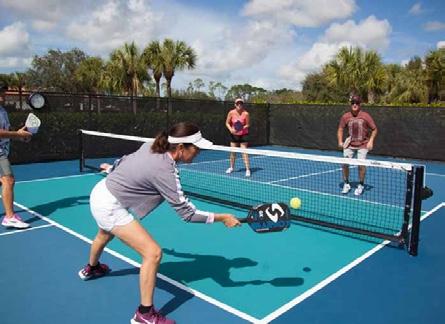


This purpose of this plan is to guide development of subsequent parks, recreation, open space and bicycle and pedestrian facilities in Indianola. Goals are presented here as desired outcomes. Strategies include both actions and policy rules, meant to achieve the stated goals.
1
Have safe access to quality park and recreational facilities, equipment, and programming regardless of income, age, race, ability or geographic location.
2
3
4
Ensure that Indianola’s parks and recreation system stays current to latest trends and is responsive to residents needs.
Maintain an inclusive, high-quality and efficient parks and recreation system in Indianola by designing parks and open spaces to be inclusive and aesthetically pleasing.
Coordinate park development efforts with other City departments, other units of government, School District, and athletic/recreational organizations.
5 Goal 6
Promote Indianola’s trail and recreational scene.
Provide adequate management and staffing levels to oversee the maintenance of park and open space lands and facilities.

This chapter presents an analysis of how well the City’s existing park and recreation facilities satisfy current needs. These findings are derived from the:











A project website was developed and included the project survey, master planning process, project components, project materials and more. The website also provided a venue to stay informed throughout the planning process, and provided an easy way for citizens to view project materials. This aspect of the communication and participation strategy was important for transparency, as well as sharing information with community members. To view the website, please visit:
https://storymaps.arcgis.com/stories/4f047086803b4e05a4e87ca1b4ab6bb0









Do you have children living in your home that are under the age of 18?


How long have you lived in Indianola?

How close is the nearest park or trail to your home?

15+ yrs
WALKING DISTANCE
What is your favorite park and recreation area to visit in Indianola?

Please identify a type of NEW recreation program or service that the community should consider offering

Soccer Complex
New Park
New or Updated Pool
Pickleball
What amenities would you like to see added to the Indianola parks system?

Would you and your household rather drive to a big park with many amenities or walk to a neighborhood park?

Splashpad
Restrooms
Soccer Complex
Objectives:
-Future Parks Planning
-Plan to influence development
-Park dedication
-Well planned and connected trails
-Identify connection to neighborhoods, parks, and regional trails/areas
Strengths:
-Well-established parks
-Buxton Park and Arboretum
-Each park has its own look and feel
-Pickard Park is 160 acres
-Country club and Deer Run Golf Courses
-Schools
-College
-Facility for Balloon Classic
-Senior Center
-3 Rec Program Coordinators
-Opportunities for a glow trail, or history trail
-Total acres of park
-Hometown pride
-Warren County fair
-History of community around the square
-Balloon Classic
-Music, Opera, outdoor movies
-YMCA
-Chamber of Commerce
-No new parks on north side of town
-Some programs declining
-Teens underrepresented
-Trails need asphalt repairs
-Could use better beautification at entrances
-Invasive species
-More lighting along the trails
-15th street to Balloon Field connection
-Playground wood chips
-Drainage
-Walkability
-South half of community needs trails
-12.5 miles of trails needed
Opportunities:
-Community input
-Survey
-Pickleball
-Single track bike track
-Splash Pad
-Aquatic Center Plan
-Inventory of Park System
-Wayfinding
-Ice Rink
-Resources
-Finances
-Near metro (competing factors)
-Bigger parks
-Older infrastructure
-Space for parks department

Indianola’s Comprehensive Plan, Elevate Indianola, was prepared in 2020. A comprehensive plan is a long-range policy guide to decisions about the physical development of a community. It sets broad policy directions for growth, development, and redevelopment.

The Sub Area Plan studies the current land uses of the sub area neighborhood and suggests alternative uses for the future based on community feedback and data collected throughout the planning process. A recommendation made within this plan was to expand Dayton Park to the west, into the Warren County Oil site if it becomes available. This opportunity can be highlighted and considered within this Parks Master Plan, along with Dayton Park improvements.

This plan addresses the communities in the North River region of Warren County. With their close proximity to Des Moines, they will see future growth and it is important to establish local culture for each city by building upon local history, art, programming and events to attract visitors. By pointing out areas of interest that can be expanded, this plan helps to guide future development decisions.

Destination Indianola highlights what makes the city a “great place” and sets goals and objectives that focus on arts and culture, architecture, diversity, business development, historic fabric, housing options, the natural environment, and amenities. These goals strive to enhance the community and the assets that it provides.

Chapter 5
Recommendations

INCREASE ACCESS TO QUALITY PARKS

DEVELOP, MAINTAIN, AND INNOVATE PARKS
Ensure all residents have access to quality parks and programs regardless of location, ability, age, interests or socioeconomic barriers.
Set a standard for excellence by constantly improving the quality, variety, safety, and recreation options, and seek safety and diversity of recreation options, new additions, and updates.

IMPROVE HEALTH AND WELLNESS
Provide safe and engaging spaces and create opportunities for residents to connect, build relationships, improve health and make memories.

PRESERVE NATURAL SPACES
Protect ecologically sensitive areas through land preservation and environmentally conscious construction and maintenance practices.

PROMOTE COMMUNITY PRIDE
Provide parks, programs and events that foster pride, generate positive attention and encourage tourism and economic growth.

METHODS:
Identify spaces to add neighborhood or community parks to meet or exceed standards set by residents and NRPA’s 10-minute walk goal.
Improve amenities at current parks and facilities for expanded service.
Adopt a parkland dedication ordinance to meet the park, recreation, and open space needs for future growth
Ensure all existing and future parks and facilities are optimized for all abilities by meeting ADA requirements and designing improvements to be inclusive.
Build high quality parks and facilities with industry-leading materials and strategies through park site master planning.
Support and encourage spontaneous play along trails.
Identify unique, unexpected spaces such as vacant or underutilized property that can be developed into small pathways and pocket parks with green space or simple amenities.
Ensure all parks and facilities are safe and accessible through design and maintenance principles, monitoring and responsiveness.

Develop parks that are currently under or unprogrammed in Indianola
Strengthen partnership with the local school district to create mutually beneficial agreements for shared uses, infrastructure development, and operations/maintenance needs and expenses.
Identify opportunities to partner with the local school district, athletic and recreational organizations, and other units of government on collaborative programming.
Utilize low-maintenance landscaping such as native prairie plantings.
Consider expanding outdoor recreational amenities to the Indianola Wellness Center for on-site daycare to utilize and to provide additional recreational space north of town.
Enhance pedestrian crossing across high traffic roadways to create inviting, safe, and traffic calming access points to parks and recreational facilities.
Prioritize trails and pedestrian connections in all new development and redevelopment opportunities, and roadway repair projects.
Continue improving signage and wayfinding.
Close gaps in the existing trail and sidewalk system. 17.

METHODS:
Reinvest in existing parks and facilities to upgrade structures and offer more variety in amenities.
Build specialty parks and amenities for enhanced experiences for all residents, including outdoor exercise equipment, splash pads, pickleball courts, tennis courts and water access.
Update parks and facilities with improved and innovative facilities to stay relevant and competitive with surrounding (competing) cities.
Seek to add financially sustaining facilities such as climbing features and improve cost recovery rate on existing programs and facilities.
Seek opportunities to increase alternative long-term funding sources, including continued grant applications and bond program evaluation.
Continue to communicate with citizens using public engagement tools to understand changing needs and trends
Relocate amenities as needed to provide new and improved park features.
Implement ADA requirements throughout the system as parks and infrastructure exceed their lifecycle or equipment replacement
Continue forward with the implementation of the 6th Street Sub-Area Plan to provide and expand community assets that will activate Regional Commercial/Residential growth along McVay trail and expand recreational and open space opportunities within the Core of the City.
Continue to pursue the relocation of Sesquicentennial Park and expand park and open space opportunities within the Indianola Square.
Routinely monitor program and facility life cycles in order to meet the needs of the community.
Improve ecological services by incorporating green stormwater infrastructure throughout parks and incorporating native landscapes.
Develop community driven master plans for neighborhood and community parks that are designed by licensed landscape architects with strong park design experience.
Develop maintenance standards and work order system to efficiently maintain facilities, especially as the parks and recreation system grows.
Develop volunteer programs to assist in maintenance, educate residents, and build community -- trash clean up, native seed collection, adopt a park/trail/open space program, adopt a waterway, etc.,
Ensure that staff levels are meeting needs for programming and maintenance.


Create inclusive parks, facilities, programs and special events that encourage play, fitness, education and personal connections, interests, and abilities by providing close, convenient, and entertaining spaces for all ages to make healthy choices.
Build a sense of community through a parksystem that provides opportunities for recreation as well as physically connecting people with parks and other centers of activity across the local region.
Ensure all parks and facilities are safe and visitors feel secure at all times through Crime Prevention Through Environmental Design (CPTED) principles, visitor education and close monitoring.
Create engaging parks, programs and special events that encourage play, fitness, education and personal connections for all ages, interests and abilities.
Encourage health and wellness for all ages through education, programming and facilities.
Continue to build community bonds through high-quality, distinctive and memorable programs and events.
Incorporate edible landscaping to promote health and wellness within the downtown. METHODS:

Identify spaces throughout the City for new parks or open space to preserve natural landscapes.
Protect open spaces through land preservation and public space beautification.
Increase opportunities for residents to connect with nature.
Use sustainable practices in planning, design, construction and operations.
Identify environmentally sensitive areas like waterways and wildlife habitats; actively work to encourage conservation and protection.
Identify new and existing spaces that can be used as minimally developed nature exploration and appreciation.
Ensure that environmental policies align with local, state and industry guidelines.
Develop and implement a natural resources management plan.
Establish an annual tree planting program for parks and public spaces. METHODS:

Create engaging spaces and meaningful opportunities for users to come together.
Build unique and innovative destination parks and facilities.
Highlight and protect the community’s unique historic, social, cultural and environmental resources.
Create an Indianola Sponsorship Guide made readily accessible on the City website.
Be recognized within the community as experts in the parks and recreation field.
Build community through distinctive themes for new and redeveloped parks and facilities.
Integrate quality public art with a standards art requirement for all projects.
Support and implement beautification strategies in the downtown square.


• New basketball striping
• New fountain
• Replace bench
• Consider replacing play equipment/surfacing
• Consider adding parking
• Work with community to determine if permanent restrooms are necessary
• Enhance accessibility
• Restrooms – upgrade.
• Parking. Street parking currently on the same side of street as park.
• Fine with current facilities.
• Mostly used for small gatherings and by residents of surrounding neighborhood.
• Could use better sidewalk connectivity and sidewalk improvements.





• Promote and highlight the historical aspects of the park
• Enhance accessibility (paths to benches, improved entry connections, replace gravel)
• Build upon existing amenities (butterfly garden, sculptures, etc.)
• Additional interpretive signage with option for walking tour, scavanger hunt, etc.
• Consider adding permanent restrooms in a discrete location
• Remain relatively untouched
• Restore gazebo.
• Need to stay relatively natural due to the arboretum.
• Put restrooms somewhere, but neighbors do not like the idea of a bathroom being in their backyard and line of sight.
• Better entrance distinction and signage – possible the east corner as main entrance.
• How do we draw more people into the center of the park where the kiosk is?
• Currently has off-street parking.
• Narrow sidewalks.
• Lighting could be expanded and upgraded to more efficient option.
• Traffic on West Girard will continue to grow, which will need to be considered.
• Promote the memorials and time capsule better.
• Walking tour with QR code implementation.
• Add bike parking – maybe SE corner.

PATH ENHANCEMENTS


HIGHLIGHT PARK HISTORY

ACCESSIBILITY IMPROVEMENTS


recoMMenDations:
• Highlight the park from the trail connection
• New basketball striping
• Add a landscape buffer between the park and industrial properties
• Consider new play equipment/surfacing
• Consider permanent restroom near the trail
• Tie in with sub area - expansion of the park.
• Bike fix-it station.
• Trailhead access (3 blocks).
• Signage off of Somerset and bike parking.
• Increase visibility with more signage.

TRAIL/PARK SIGNAGE WITH MAP

PERMANENT RESTROOMS

VEGETATIVE BUFFER


UPDATE PLAY EQUIPMENT/ SURFACING


recoMMenDations:
• Add signage to match the other parks
• Pave parking area
• Add a path to the picnic tables
• Highlight bird watching and nature loop trail
• 70% Nature (7 Acres).
• Birdwatching.
• Single track bike rack.
• No parking (4-6 spots max.) NE Corner.
• Disc Golf opportunity.
• Seating along paths.
• Butterfly garden.

SIGNAGE TO MATCH OTHER PARKS





recoMMenDations:
• Pave parking area
• Replace play equipment/carousel
• Replace kiosk
• Add additional shaded areas
• Add lighting
• Trail connection to Lake Ahquabi State Park
• Consider permanent restrooms
• Heavily used.
• K Street to be paved.
• Anonymous donation for shelter.
• Gravel parking needs upgrades.
• Location for regional trail connection.
• Trail on west side of park.
• Permanent restrooms and dog wash.
• Bird watching.
• Opportunity for more lighting.






recoMMenDations:
• Add signage on opposite side to match the other parks
• Create a more welcoming entryway
• Add drainageway enhancements
• Consider additional plantings and drainageway bridge
• Consider new play equipment/surfacing
• Location is kind of hidden and hard to find. Sign is on the north side.
• No parking or room for parking.
• Not easily accessible.


PLAYGROUND SURFACING
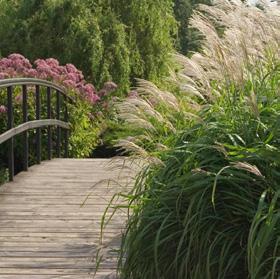
SIGNAGE ON THIS SIDE OF THE PARK BRIDGE WITH PLANTINGS



recoMMenDations:
• Pave and expand the parking area
• Update the sand volleyball
• Add a map for the disc golf
• Consider a new shelter or shelter upgrades
• Goal post upgrades
• Consider rubber surfacing
• Add additional lighting
• Home to the 18-hole disc golf course.
• Needs more parking.
• Possible location for pickle ball courts. Could be in place of volleyball courts.
• Shelter is in good condition and very accessible.
• Nice playground.
• Connect SE neighborhood to park.
• Park is popular.









recoMMenDations:
• Update play surfacing
• Provide play equipment upgrades as needed
• Consider Permanent Restrooms
• Look into additional parking
• Provide aquatic center upgrades as needed
• Add events/Programming
• Consider relocating the playground and adding parking in its location
• Aquatic Center Feasibility Study
• Simpson uses NE corner.
• Pretty crowded with facilities already.
• Areas that are not occupied are heavily affected by stormwater.
• Improve sidewalk connectivity from parking to facilities.
• Pavement improvements.
• Implement a more permanent barricade for events.
• Another phase of amphitheater – phase two has yet to be implemented.
• More events/programming.
• Relocate playground and put parking there.
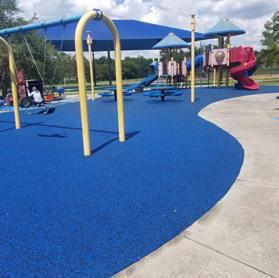
PLAYGROUND SURFACING



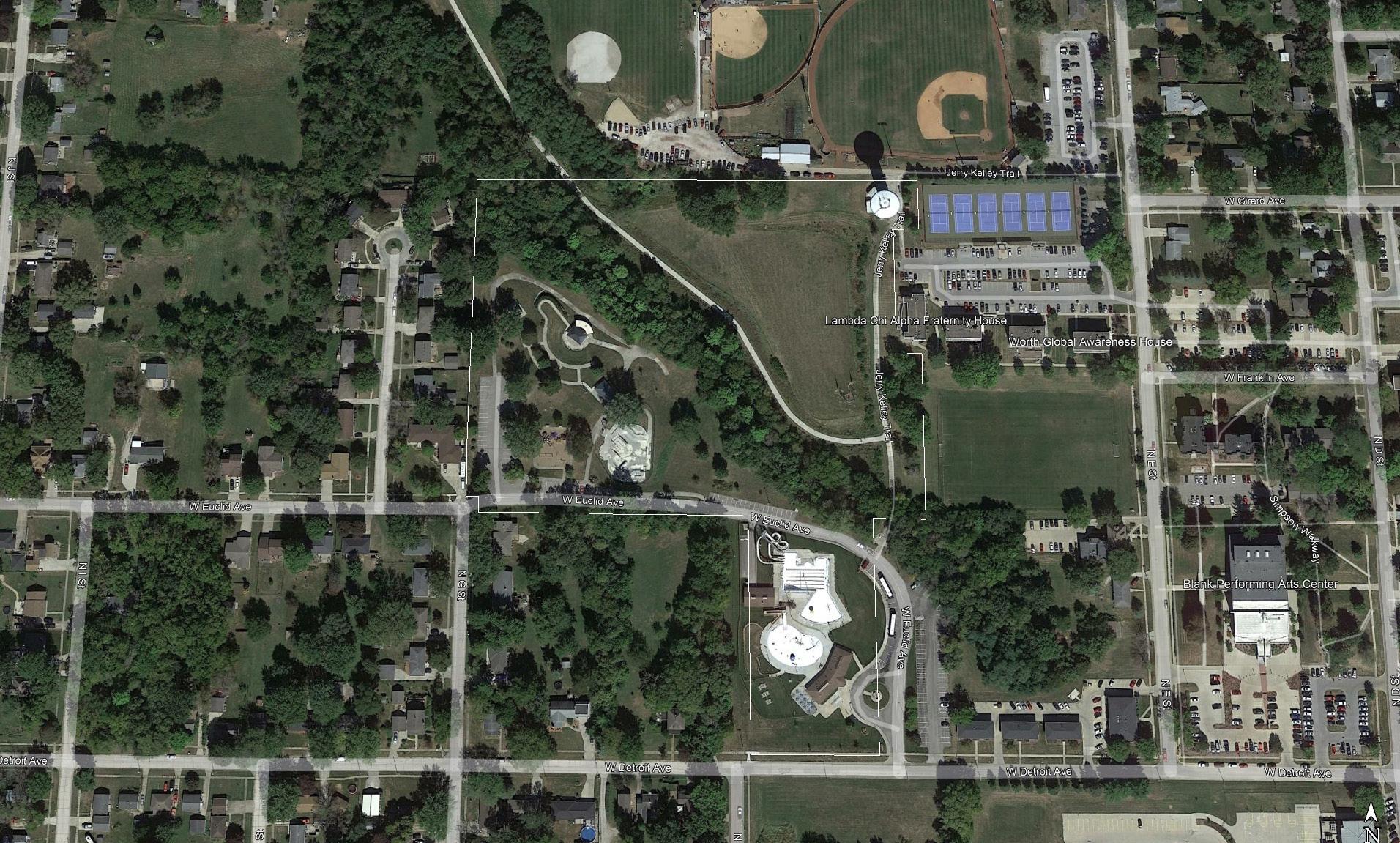


• Highlight the park’s history and connection to Chris Street
• Consider adding pickleball
• Consider rubber play surfacing
• Highlight Chris Street court dedication
• Address stormwater and drainage
• Add ADA Parking
• Add flashing signals to access the park
• High visibility.
• Pickleball court could be included.
• Decent parking.
• Add bike parking and trail connectivity.
• Add green buffer to separate the park from the highway.
• Utilize the fence area for promotion of programs and events.
• Add seating.
• Add lighting near basketball and just more in general.
• Remove striping – will be a yearly maintenance.
• Stormwater and drainage – low spot in back right corner (terrain issues).
• ADA handicap parking – relevel, street crossing.
• Flashing signals to access park.


PLAYGROUND
SURFACING
HIGHLIGHT PARK HISTORY

PICKLEBALL COURTS



• Increase visibility of the park
• Highlight world-class disc golf
• Add a disc golf course map
• Outdoor classroom addition
• Add a nature playscape
• Promote the park’s history/story
• Conserve and add additional oak/savanna
• Consider adding a batting cage
• Coordinate special event parking
• Continue land and vegetation management
• Needs to stay relatively natural and as is.
• Improve connectivity to south side of park.
• Housing will most likely develop on the west side, so something to consider.
• Place nature-scape or natural playground on south side of park.
• Current trails are unsurfaced grass.
• Better signage for trails and park facilities
• Trail map with length, time, etc.
• Work with USDA to address the cattle feedlot water runoff to the north side of the park.
• Consider removing campground area. It currently has 12 spots and is bringing in minimal income.
• Consider a lodge of some sort.
• Parking is currently maxed out.
• EV charging stations.
• Include permeable paving, rain gardens, and bioswales where possible in parking lots.
• Constant erosion off ball fields that needs to be dealt with.
• Special event parking solution may be necessary in the future.
• Batting cages on NW corner – baseball club will need financial input.
• Reference and work toward implementing Oak Savannah (existing plan) /Nature Playscape on south side.
• Ball field needed.
• Stress long-term conservation of park natural areas.
• Study of invasive species and natural landscape.
• Continue land and vegetation management – routine prairie burns.

ENTRY ENHANCEMENTS
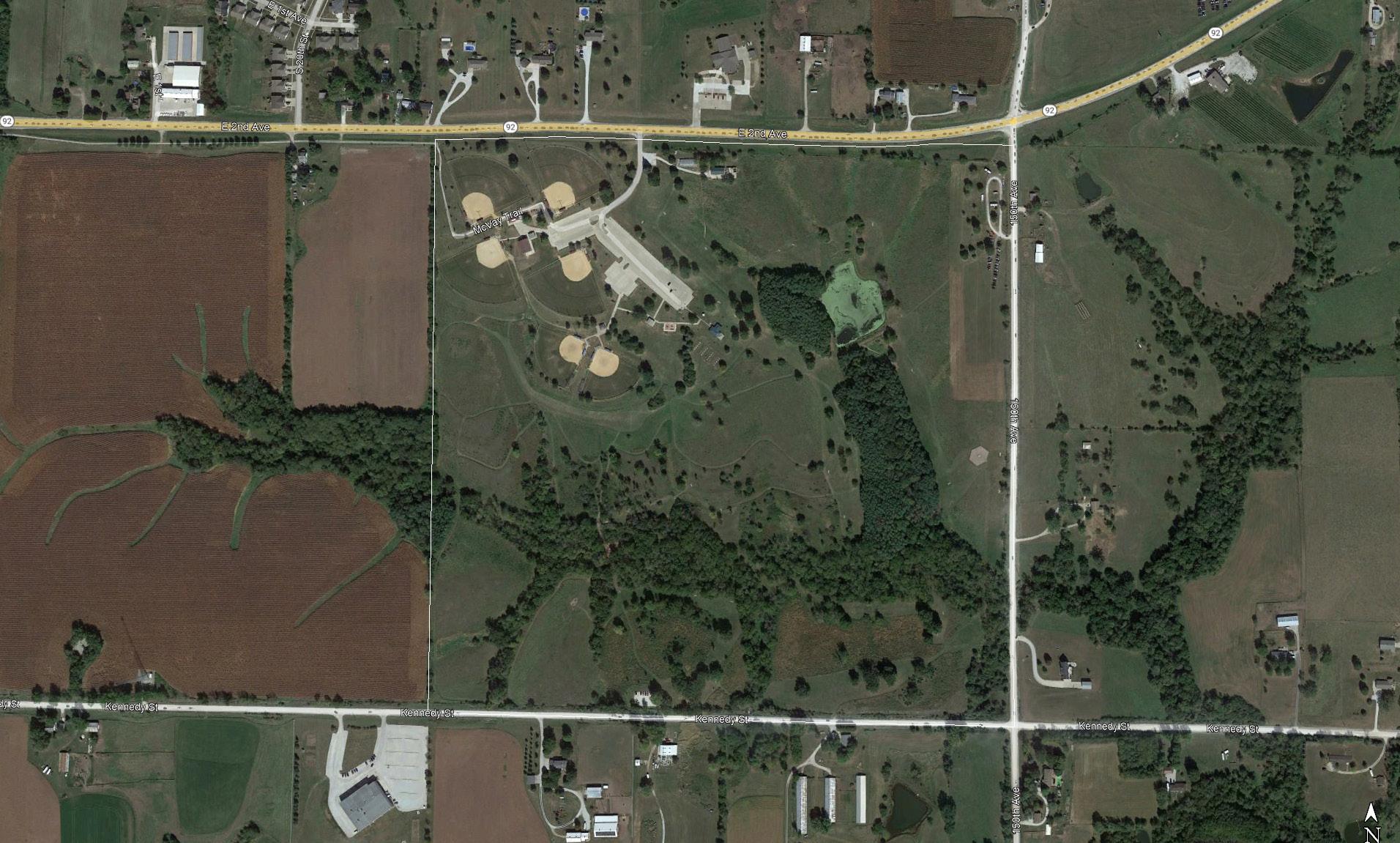
EXISTING BALL FIELDS

ADDED BALL FIELD
EXISTING DISC GOLF

MAP
OUTDOOR CLASSROOM



NATURESCAPE


recoMMenDations:
• Highlight the park while available
• Relocate the central sculpture when park is decommissioned
• Add a similar look and feel to one of the new parks identified
• Maintain the landscaping border of the park
• Will probably be moving, so not much focus should be put here.
• Maintain border of park alongside roads – green barrier.
• Landscaping of new facility.
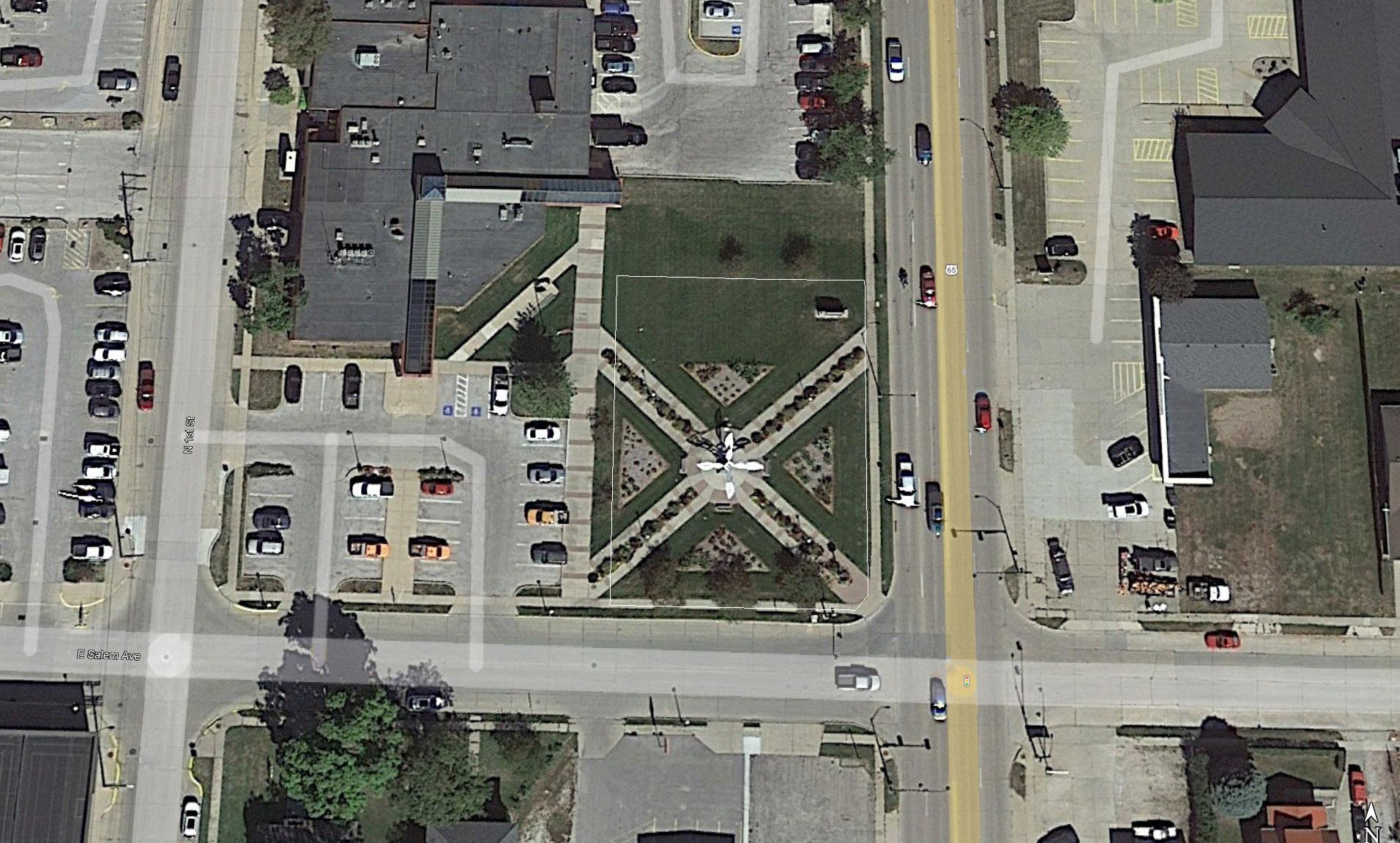
RELOCATE SCULPTURE

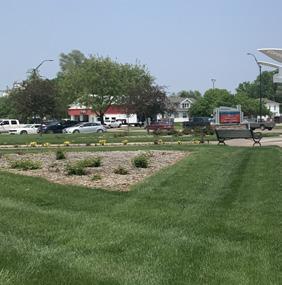
NEW PARK IN ANOTHER LOCATION WITH BEAUTIFUL PLANTINGS


recoMMenDations:
• Determine a new use for the northern portion of the park
• Enhance accessibility
• Consider adding paved parking
• Consider adding a loop trail/walking path
• Determine new uses for underutilized space
• Currently this area is used to put snow accumulation.
• Non-functional basketball court.
• Possible location for pickleball courts.
• Possible location for splashpad.
• Slight incline on the site.
• Widen sidewalk.
• Designate gravel portion for parking.
• Pickleball court in NW corner.
• Expand and refigure existing playground.
• Improve restrooms.
• Look into possible dirt available from other projects to level land (McCord too).




PLAYGROUND
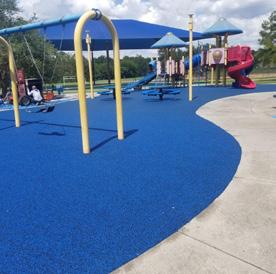
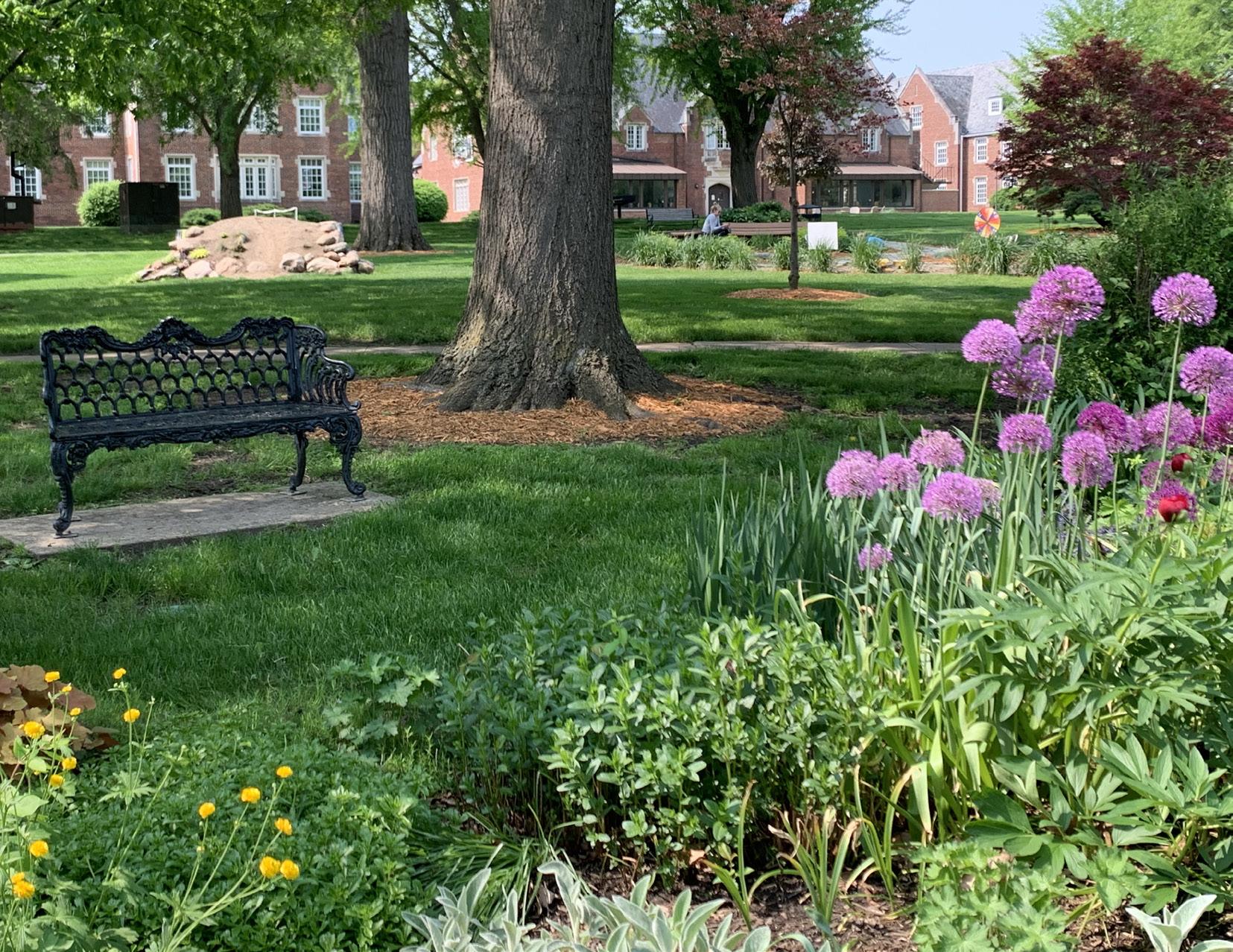
Chapter 6 IMPLEMENTATION
One of the most important aspects of the Master Plan is the discussion on implementation. This section explores potential funding opportunities, discusses the value of establishing priorities, and suggests recommended monitoring methods. This plan also makes an appeal to public partners and citizen groups to provide oversight and to be actively involved in implementation. Residents, local government, the school district, law enforcement, healthcare, local businesses, developers, and other agencies will need to work together for Indianola’s vision for its parks, trails, and open space system to be successful.
As previously described, the community has indicated that fixing what Indianola already has before investing in new attractions, is a primary goal. To achieve that goal, the City should begin by approaching improvement recommendations for priority parks. As these recommendations were determined at a master plan level, each project will require additional study, planning and design. Some of these projects will be within the capabilities of City staff, both on the design and implementation stages. However, more complex projects will likely require involvement from outside consultants.
The City is encouraged to start planning recommendations into the capital improvement budget. Selecting lower cost projects for immediate implementation will illustrate the City’s willingness to put this master plan into action. It will demonstrate commitment to its objectives for implementing this plan and will set a positive course for fulfilling the goals defined by the community.
The Action Plan is designed as a guide to help Indianola community leaders prioritize opportunities and address issues within the City of Indianola and the surrounding area as it relates to parks and recreation. The desired vision for Indianola cannot be created over night. However, by incrementally implementing the recommendations within this plan, Indianola can achieve the desired outcomes set forth in this plan.
There are five broad funding sources available to help offset costs to complete the projects listed in this Plan, as described below.
General Municipal Funding – It is assumed that some general municipal funds/borrowing will be required to assist with the completion of projects or as a matching source for state or federal grants (e.g. wayfinding, signage, or park land acquisition).
Special Assessments – Particular projects that benefit individual properties (e.g. sidewalk/trail installations) could be funded through special assessments whereby the City recoups initial design and construction costs through increased real estate taxes on those properties for a set period of time.
Private Donations – Some of the projects could be partially or fully funded through private donations or public fundraising.
State and Federal Grants – There are many different state or federal grants that may be able to offset the costs of some of the identified projects. Only those programs most likely to award funding to Indianola are listed.
Tax Increment Financing (TIF) – Tax increment financing (TIF) is a program where the additional taxes generated from development in a TIF district would go towards specified public improvements in a community. This program helps waylay the impacts of new development on a community while improving the attractiveness of the City.
CAT - Community Attraction and Tourism Program (ECIA)
City - General Fund, Special Funds, TIF or Assessments
HC - Hired Consultant
IACPG - Iowa Arts Council Project Grant
IFMA - Iowa Farmers Market Association
ILRTF - Iowa Living Roadways Trust Fund
KIB - Keep Iowa Beautiful Community Beatification Grant Program
LWCF - Land and Water Conservation Fund
PCRC - Pedestrian Curb Ramp Construction
PIB - Paint Iowa Beautiful
REAP - Resource Enhancement and Protection City Parks and Open Spaces
TAP - Transportation Alternative Program
TFK - Trees for Kids and Trees for Teens
THF - Tony Hawk Foundation
TIF - Tax Increment Finance
TP! - Trees Please! (MidAmerican Energy)
TSIP - Traffic Safety Improvement Program
Barker Park RECOMMENDATIONS PRIORITY
(0-2 Years)
(2-5 Years)
(5+ Years)
Consider replacing play equipment/surfacing
Consider adding parking (on-street)
Work with community to determine if permanent restrooms are necessary
Enhance accessibility/walkability by filling in sidewalk gaps and connecting to bike routes
Buxton Park RECOMMENDATIONS
Promote and highlight the historical aspects of the
Enhance ADA accessibility (paths to benches, improved entry connections, replace gravel)
Build upon existing amenities (butterfly garden, sculptures, etc.)
Additional interpretive signage with option for walking tour, scavanger hunt, etc.
Consider adding permanent restrooms in a discrete location
Tree maintenance and beautification - remove hazard trees when necessary
Consider on-street parking on Euclid
Consider adding hammock poles
Provide WiFi Access - Partner with Simpson
(0-2 Years)
(2-5 Years)
(5+ Years)
Dayton Park
RECOMMENDATIONS
DeNelsky Park RECOMMENDATIONS
Easton Park
RECOMMENDATIONS
McCord Park RECOMMENDATIONS
Memorial Park RECOMMENDATIONS
Sesquicentennial
Park RECOMMENDATIONS
the park while available
Relocate the central sculpture when park is
Add a similar look and feel to one of the new parks
the landscaping border of the park
